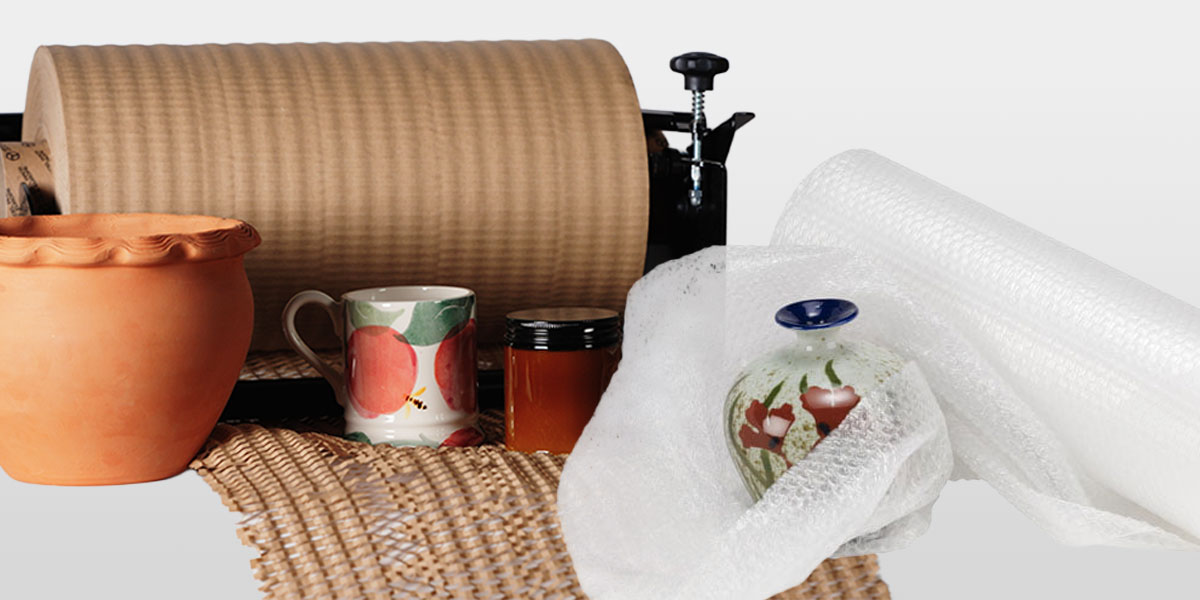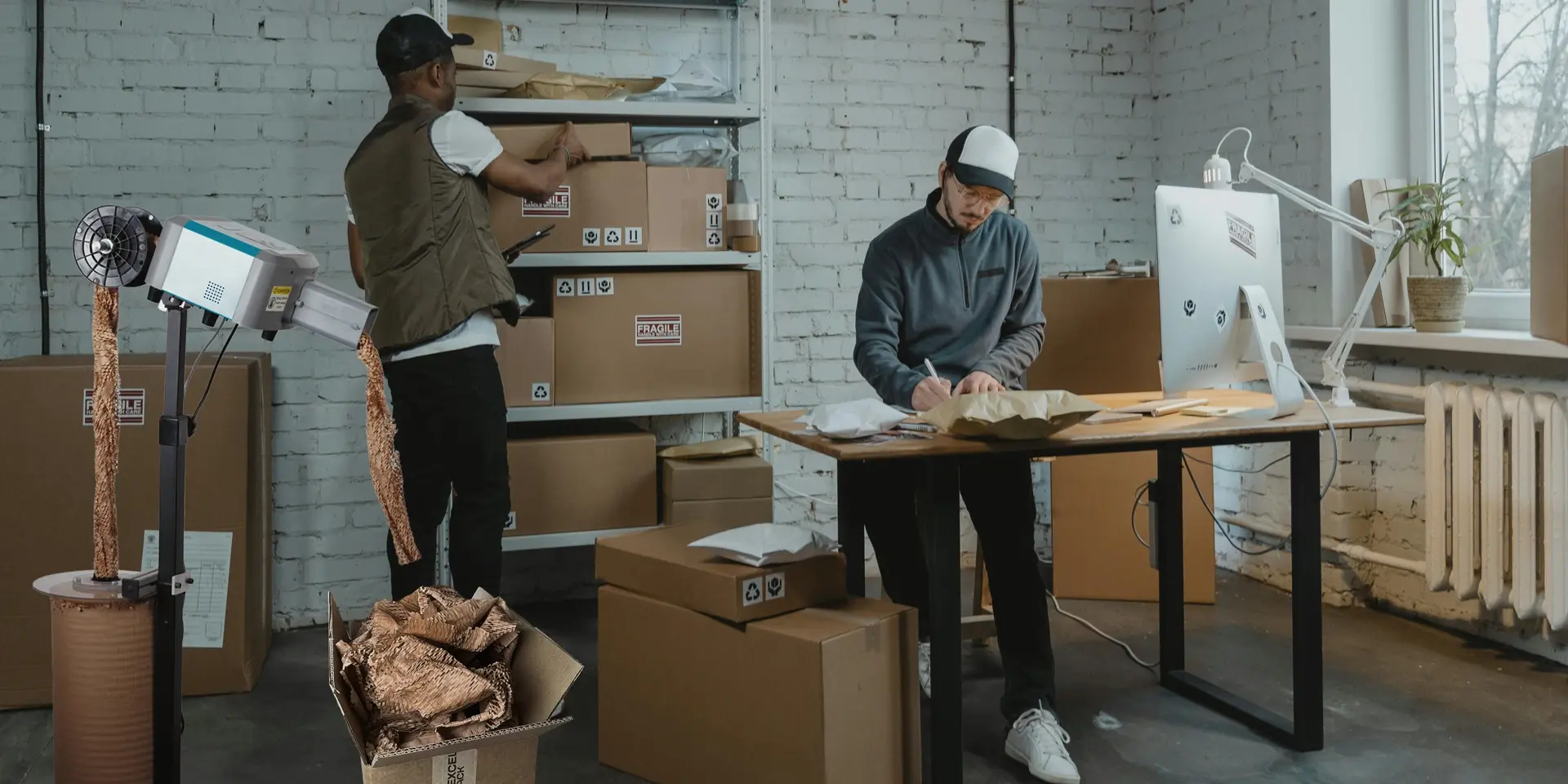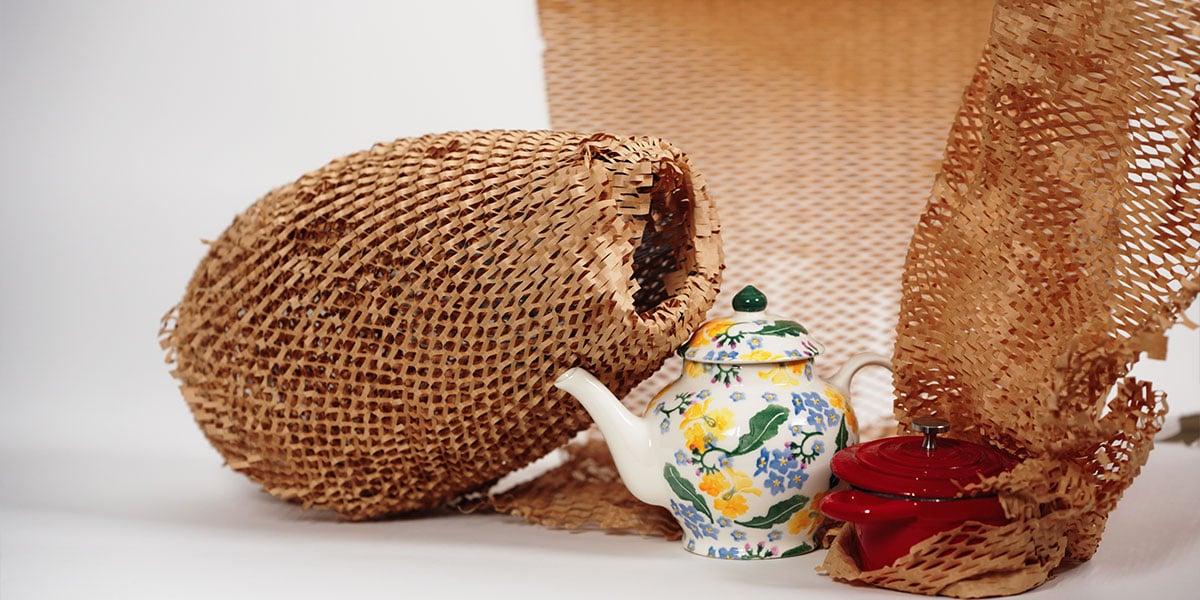Types of Packaging: Primary, Secondary, and Tertiary Layers

Choosing the right packaging is essential for protecting products, enhancing branding, and ensuring smooth transportation. Whether you’re selling directly to consumers or shipping in bulk, packaging serves multiple purposes–from safeguarding fragile items to creating a positive unboxing experience.
There are three key layers of packaging: primary, secondary, and tertiary. Depending on your business needs, you might use all three or just one or two. As environmental concerns grow, it's more important than ever to consider sustainable alternatives. Fortunately, HexcelPack®’s sustainable packaging solutions can help reduce excess materials while still providing the protection and presentation your products need.
In this guide, we’ll break down the role of each packaging layer and explore eco-friendly alternatives that support both your business and the planet.
Primary Packaging
This is the layer that comes in direct contact with the product, such as a tube of toothpaste or a bottle of perfume. It serves as a protective barrier and plays a key role in:
- Preventing damage
- Preserving the quality of the product
- Providing essential details, like ingredients or instructions
It can also serve as a branding tool to enhance the overall presentation of the product.
If the packaging is defective–whether it’s dented, punctured, or improperly sealed–customers may assume the product inside is compromised. This can lead to higher return rates, dissatisfied buyers, and a negative brand reputation. Even if the product itself remains intact, damaged packaging can create doubt about quality and safety, influencing purchasing decisions and eroding customer trust.
Secondary Packaging
Secondary packaging is designed to protect the primary packaging and, ultimately, the product inside. It serves as an additional layer of defense and varies based on the type of product.
For example, the box that holds toothpaste or perfume is a form of secondary packaging. In addition to providing protection, it also improves handling, storage, and transportation, making it easier to move or stack products–whether on display or in a warehouse.
While secondary packaging is often discarded after the product is opened, it can also serve a marketing purpose by highlighting key features that go beyond what is shown on the primary packaging.
Tertiary Packaging
Tertiary packaging is the outermost layer of packaging and plays a crucial role in bulk handling, storage, and transportation. Think pallets and pallet wrap. It’s designed to group multiple secondary packages together, making it easier to manage large quantities of goods.
Some e-commerce brands combine secondary and tertiary packaging to reduce material use, but the approach depends on the product itself.
Key functions of tertiary packaging include:
- Prevents movement during transport: Tertiary packaging keeps items stable and secure, preventing them from shifting or falling during transit. This is especially important for fragile items or large shipments that must remain intact throughout the journey.
- Simplifies loading and unloading: By consolidating multiple secondary packages into a single unit (such as a pallet), tertiary packaging makes it easier to handle goods in bulk. This streamlines the loading and unloading process, saving time and reducing labor costs.
- Reduces the risk of damage: By securing items tightly together, tertiary packaging minimizes the chances of damage caused by friction, shifting, or impact. This is particularly critical for long-distance transportation or shipments passing through multiple handling environments.
Beyond these functions, tertiary packaging is essential for maintaining product integrity throughout the supply chain. Designed to withstand the rougher aspects of logistics, it ensures that products arrive at their destination safely.
Understanding the role of each packaging layer helps you better protect your products, streamline operations, and reduce waste. Speaking of reducing waste…
Sustainable Packaging Alternatives
With evolving regulations and increasing consumer demand for eco-friendly solutions, businesses are seeking more sustainable packaging options. HexcelPack® offers products that can supplement or replace traditional primary, secondary, and tertiary packaging while reducing environmental impact.
HexcelPack’s sustainable packaging solutions include:
Product Wrap: HexcelWrap™
Some items, like vases, don’t come in a box, while others need extra protection to prevent rubbing during transit. HexcelWrap is a paper-based alternative to plastic bubble, providing cushioning and protection for fragile items.
Void Fill: HexaFil™
Even when products are in their own primary packaging, they may shift and rub against each other during transit. HexaFil is a recyclable void fill that cushions items within a larger box or carton, reducing movement and the risk of damage. It can be used alone or alongside HexcelWrap™ for complete protection.
Protective Envelope: Hexcel'Ope™
For smaller items like jewelry or skincare, a bulky box may not be necessary. Hexcel’Ope provides the protection of a padded mailer without excess packaging, making it a great alternative for direct-to-customer shipping.
Pallet Wrap: HexcelStretch™
Pallet wrap is essential for stabilizing multiple boxes during shipping and making transport more efficient. HexcelStretch is a 100% paper-based pallet wrap designed to securely stabilize palletized loads up to 5,400 lbs—offering 30% better stability than plastic wraps.
Sustainable Packaging Vs. Traditional Packaging Materials
For decades, product packaging has relied on plastic and Styrofoam, often chosen for its lower upfront cost. However, these materials come with significant drawbacks, especially compared to sustainable alternatives like those from HexcelPack.
The chart below compares traditional and sustainable packaging across key factors:
| Product Feature | Traditional Packaging (e.g., Plastic) | Sustainable Packaging (HexcelPack) |
| Disposal | Difficult to recycle; often ends up in landfills or oceans | Can be curbside recycled or composted |
| Manufacture | Uses non-renewable resources, producing a higher carbon footprint and more pollution | Made with renewable resources, like paper |
| Efficiency | May require more material to achieve adequate protection, increasing costs and labor | Provides efficient cushioning, reducing material use and improving operational efficiency |
| Safety | May contain toxic chemicals that can leach into products, penetrate the skin, or be inhaled | Safe for both employees and customers, even with frequent handling |
| Compliance | Will not meet upcoming European regulations for sustainable packaging by 2030 | Designed to comply with evolving global sustainability regulations |
| Brand Image | Can negatively impact consumer perception, especially among eco-conscious buyers |
Enhances brand reputation with sustainability-focused consumers who prefer responsible businesses |
By switching to sustainable packaging, businesses can reduce waste, improve efficiency, and strengthen their commitment to environmental responsibility—all while meeting evolving regulatory standards.
Try HexcelPack
If you’re looking to streamline your packaging strategy or introduce more sustainable solutions, we encourage you to give HexcelPack a try. Send us a sample of your product, and we’ll return it wrapped and packed. If you like what you see, our team will provide you with a detailed shipping analysis on making the switch to our sustainable packaging.

